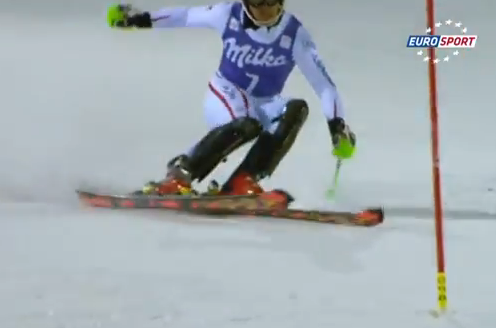Second, higher is not the same as earlier, higher is higher.
Thank you for saying that.
Everyone else, please repeat after me:
"A high line is not the same as turning early."
"A high line is not the same as turning early."
"A high line is not the same as turning early."
When you tell athletes to turn earlier, nine times out of ten, they try to add more early pressure in the turn without moving the line up the hill; usually, that results in too much pressure before the rise line, which turns into pinching, double-turning, and all sorts of other mean and nasty things. Of course, sometimes the coach just says "more earlier," without realizing that he/she and the athlete are operating from a mismatching vocabulary, and things just get worse. In reality, that racer needs more elevation—distance above the gate—so that he or she can put the pressure in the fall line and still exit the turn in a good position for the next.
It's also worth noting that
releasing a turn earlier is very different from
starting a turn earlier.
To the original question, yes, it's a tactical decision once you understand the impact your line choice will have on your speed and position relative not only to the gate you're at but also to the gate three gates down the hill. In a 12-gate beer league course, pinching and running silly-straight may just work, because by the time the line catches you out and you need to jam to make the next gate, you're across the finish line. Take those same 12 gates and set them above a pitch with even moderate offset in a USSA race, and that line that works great for the beer league may just put you in the fence.
As ScotsSkier noted, forcing racers to ski the same course with different elevation is a great way to help them understand (a) what a high/medium/low line is and (b) what happens when they try to ski each of those lines. Setting brushes in the transition zone identifying each line (use the same color for each the whole way down) can be a helpful drill in that regard.




